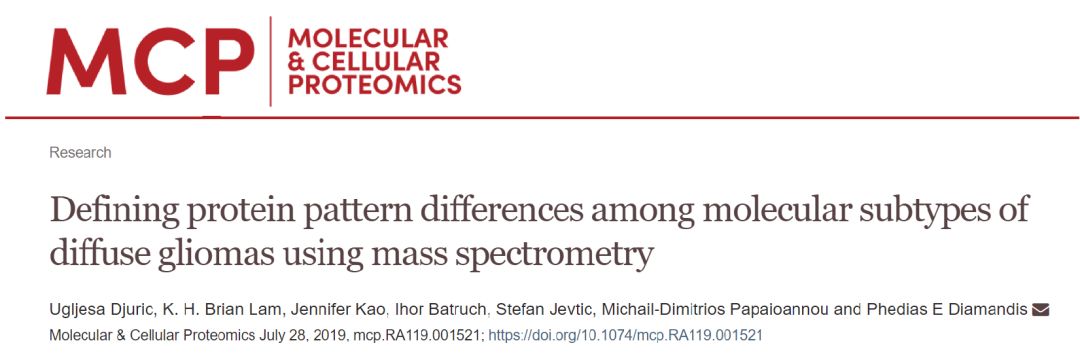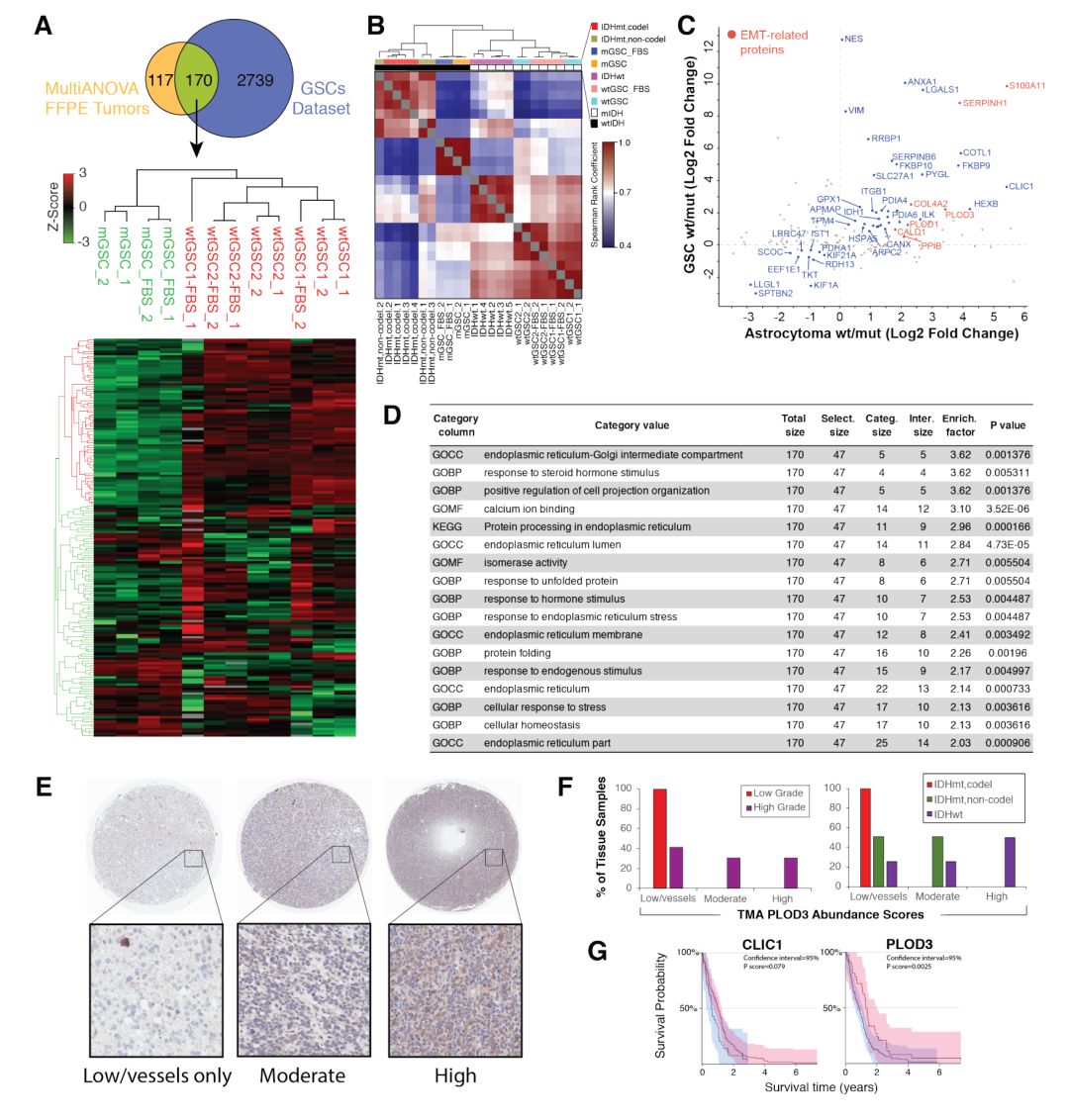
Jingjie Academic/Selected
On July 28, the top journal in the field of proteomicsMCP published online the latest research findings on diffuse gliomas by Professor Phedias Diamandis from the Department of Experimental Medicine and Pathology at the University of Toronto. The researchers expanded the existing glioma proteomics resources using quantitative proteomics technology, adding proteomic information for different genetic subtypes of diffuse gliomas. The study found differences in protein expression in different biological processes among diffuse gliomas of different genetic subtypes, providing research ideas and directions for subsequent studies.


 Figure 1. LC-MS/MS Analysis of Proteomic Differences among Glioma Subtypes
Figure 1. LC-MS/MS Analysis of Proteomic Differences among Glioma Subtypes
 Figure 2. The Effect of IDH Mutation Status on the Changes in Abundance of Proteins Related to Different Biological Processes
Figure 2. The Effect of IDH Mutation Status on the Changes in Abundance of Proteins Related to Different Biological Processes

This article is original by Jingjie Academic team, welcome to share it to your friend circle. For reprints, submissions, and other cooperation needs, please add WeChat ptm-market for consultation.
Past Highlights Review
4D-LFQ: New Generation! 4D Proteomics 2019 Highlights
Clinical Oncology: Review: Proteomics Studies of Large Sample Cohorts in Clinical Oncology
Neuroepithelial Tumors::Cancer Cell: Combined Analysis of Proteomics and Modifications Reveals Molecular Typing of Neuroepithelial Tumors
Gastric Cancer Molecular Typing: The Phoenix Rests on the Parasol, Not Stopping—Chinese Scholars Use Proteomics for Molecular Typing of Gastric Cancer and Reveal Potential Therapeutic Targets
Liver Cancer: The Beauty of Flowers and the Phoenix Flying, Nature| Chinese Human Proteome Project Discovers New Targets for Precision Treatment of Liver Cancer
Ovarian Cancer:CELL Heavyweight! Proteomics Reveals Chemosensitivity Mediators and Immunotherapy Targets in Ovarian Cancer
Pancreatic Cancer: Nature | Integrated Proteomics Research Reveals New Targets for Treating the “King of Cancer”
Breast Cancer: Nat Comun| Proteogenomics Reveals Targets for Drug Treatment of Breast Cancer
Lymphoma: PNAS | Proteogenomics Reveals Biomarkers and Potential Drug Targets for Lymphoma
Melanoma:CANCER RES: Targeted Quantitative Proteomics Reveals the “Murderers” of Melanoma Metastasis
Glioma: Arrow Without Missing—Using Multi-Omics to Identify Molecular Markers of Malignant Gliomas

